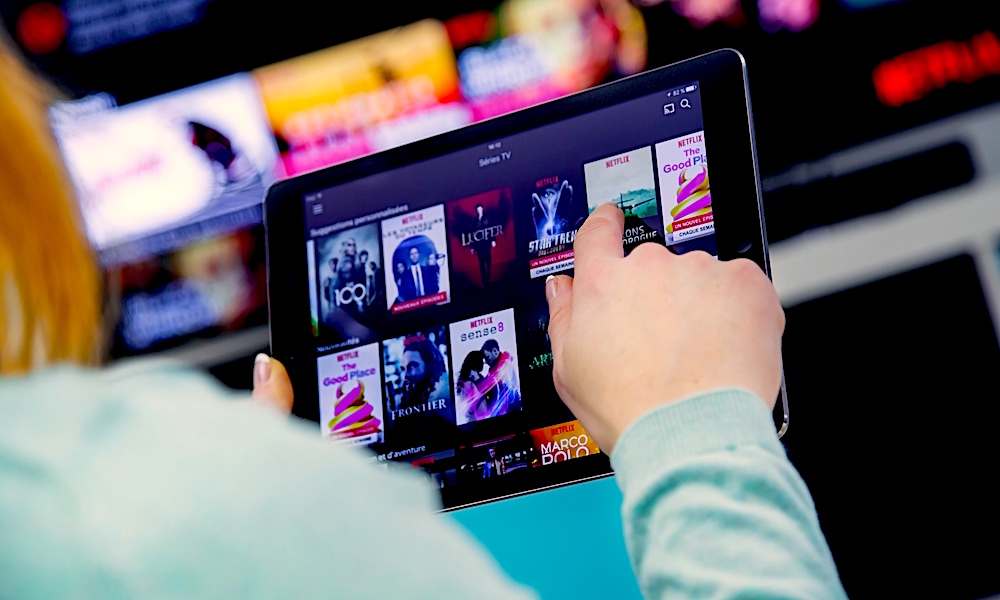Netflix Kills AirPlay Support Citing Dubious ‘Technical Limitations’
 Credit: pixinoo / Shutterstock
Credit: pixinoo / Shutterstock
Toggle Dark Mode
Only a few days after the big media event where Apple officially announced its own new TV+ streaming service, Netflix appears to have unceremoniously dropped support in its iOS app for streaming content from an iPhone or iPad using Apple’s AirPlay technology.
It’s unclear exactly when the feature disappeared, with MacRumors reporting that several of its readers had run into issues at various points last week, leading to the discovery of an update on Netflix’s support site that “Airplay is no longer supported for use with Netflix due to technical limitations.”
While it was initially unclear what those “technical limitations” might be, a Netflix spokesperson later told The Verge that the problem is the inability for Netflix to provide the best customer experience when viewing content. With a new slate of AirPlay-enabled TV sets coming onto the market, Netflix is ostensibly concerned that it will be unable to tailor its video output for the type of screen that users are casting to, since AirPlay 2 doesn’t share any kind of digital identifier to let Netflix know what device is on the other end of the connection. As a Netflix spokesperson said, “We can’t distinguish which device is which, we can’t actually certify the devices… so we’ve had to just shut down support for it.”
We want to make sure our members have a great Netflix experience on any device they use. With AirPlay support rolling out to third-party devices, there isn’t a way for us to distinguish between devices (what is an Apple TV vs. what isn’t) or certify these experiences. Therefore, we have decided to discontinue Netflix AirPlay support to ensure our standard of quality for viewing is being met. Members can continue to access Netflix on the built-in app across Apple TV and other devices.
Official Statement from Netflix
However, the odd move has left many speculating that there may be more to the story than Netflix is letting on. Arguably, even when AirPlay could only be used to stream content to an Apple TV set-top box, Netflix had no way of determining what type of actual television set was connected to the Apple TV’s HDMI port, so it seems disingenuous of the company to be suggesting that the addition of AirPlay 2 support to other television sets suddenly changes the game in any significant way.
Whatever the actual limitations are, Netflix seems to be pointing the finger at Apple, “strongly suggesting” to The Verge that it’s up to Apple to fix whatever the issue is that Netflix has with AirPlay — most likely by opening up the protocol to provide device IDs to Netflix so that it knows what it’s casting to.
There have also been some suggestions that the issue may be related to Netflix — and its content licensors — fearing that copy protection may not be enforced. However, it’s difficult to see how this could be a realistic concern, since Apple’s opening up of AirPlay 2 is far from a free-for-all — Apple will still control who it licenses the technology to, and Apple itself would face the exact same issues with the content that it currently sells on the iTunes Store. In fact, Apple has been dealing with copyright licensing and DRM for longer than even Netflix has, so claiming not to trust Apple’s enforcement of content protection would be rather petulant on the part of Netflix.
Netflix has also been testing a mobile-only version of its service in India, and while that seems like it may only be something uniquely tailored for that market right now, if Netflix has ambitions to expand that plan to a wider audience, it would make sense to block AirPlay support to prevent users from being able to pay for a lower-priced plan and still get the big-screen experience. While Netflix could theoretically only block AirPlay support for those subscribers, such a move would likely run afoul of Apple’s App Store Review Guidelines, which explicitly prohibits developers from “monetizing built-in capabilities provided by the hardware or operating system.”
Regardless of whether the issue is one of “certifying” devices for the best viewing experience — which really sounds like PR spin no matter how you read it — it does seem that it’s a matter of Netflix wanting to know more about the device on the other end. While some have suggested this could also be a power play with Apple, Netflix has denied this, stating explicitly that “It’s not a business competition play.”
That said, the removal of AirPlay support is just the latest in a series of moves that Netflix has been making away from Apple over the past year or so. While it’s not about to cut off a huge part of its subscriber base by leaving the Apple ecosystem entirely, Netflix has grown large enough that it feels that it can now do the bare minimum to support Apple device users. The company recently removed in-app subscriptions from its iOS and tvOS apps in order to avoid the need to give a cut of subscription revenue to Apple, and has been the lone conspicuous holdout from joining on with Apple’s TV app even in the early days, with Netflix CEO Reed Hastings making it clear that Netflix is determined to steer its own ship and remain independent of any content partnerships, telling Recode last month, “We want to have people watch our shows on our services.”






